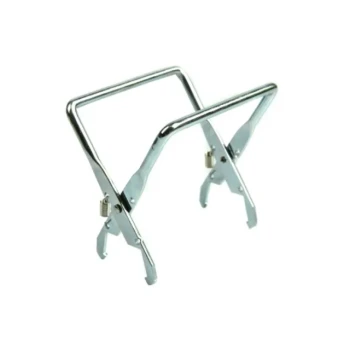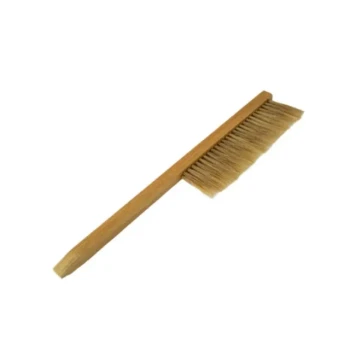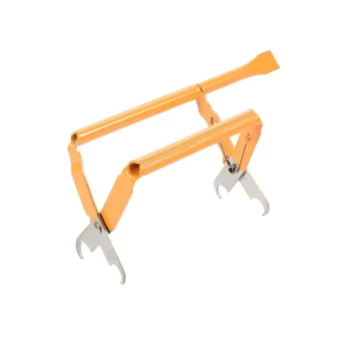The choice between wax, plastic, or foundationless frames is a foundational decision in beekeeping. Wax foundation offers a natural material that bees readily accept but is fragile and expensive. Plastic foundation provides durability and ease of use at a lower cost, though it may require an extra wax coating to encourage bees. Going foundationless is the most natural and cost-effective method, but it demands significant oversight from the beekeeper to ensure the colony builds straight, manageable combs.
Your choice of foundation is less about finding a single "best" option and more about aligning your equipment with your beekeeping philosophy, your goals for honey production, and the amount of time you can dedicate to hive management.
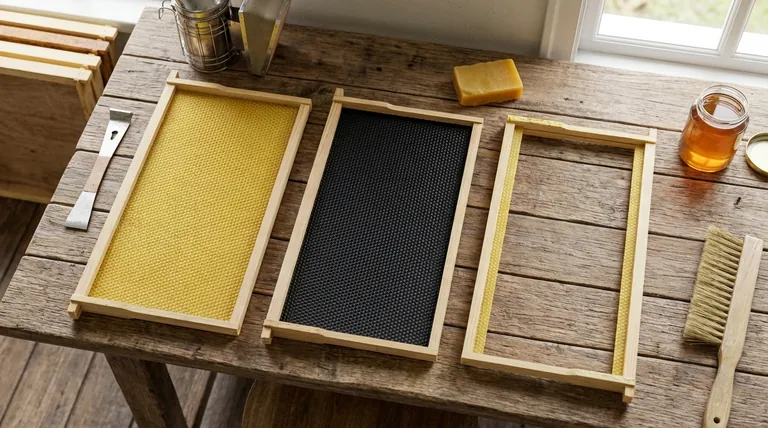
A Deep Dive into Wax Foundation
The Primary Advantage: Natural Acceptance
Beeswax foundation is the most traditional and naturally accepted option. Made from the same material bees produce, it emits a familiar scent that encourages the colony to begin "drawing out" the comb quickly.
This rapid acceptance is a significant advantage, especially in areas with short nectar seasons where time is critical.
Structural Benefits and Control
Wax foundation guides bees to build straight, uniform combs. This structure is essential for easy hive inspections and, most importantly, for efficient honey extraction using a centrifugal extractor.
Furthermore, because bees build on it so readily, it helps a new colony establish itself faster, leading to better overall health and productivity.
The Practical Downsides
The main drawbacks of wax foundation are its cost and fragility. It is typically the most expensive option per sheet.
It also requires careful handling and installation into frames, often involving wiring for support. In hot weather, a heavy frame of honey on pure wax foundation can sag or collapse, creating a significant mess in the hive.
The Case for Plastic Foundation
Durability and Ease of Use
Plastic foundation is the clear winner in terms of durability and convenience. It is rigid, does not sag in the heat, and can withstand the high speeds of honey extractors without breaking.
This resilience means it can be cleaned and reused for many years, making it a cost-effective choice over the long term. Frames with pre-installed plastic foundation are also simple and fast to add to a hive.
The Acceptance Hurdle
The primary challenge with plastic foundation is that bees can be reluctant to build on it. The surface is foreign to them compared to natural beeswax.
To overcome this, most plastic foundations come with a thin coating of beeswax. However, beekeepers often find they need to apply an additional, thicker layer of melted beeswax to ensure the colony accepts and utilizes the frame.
The "Plastic in the Hive" Debate
For some beekeepers, particularly those focused on natural or organic practices, introducing plastic into the hive environment is a philosophical negative. While the bees work on the wax coating, the underlying structure is still a man-made material.
Going Foundationless: The Naturalist's Choice
Ultimate Bee Freedom
Foundationless beekeeping allows the colony complete control over its comb construction. The bees determine the cell size, which is crucial for their natural lifecycle and brood-rearing patterns.
This method is the most cost-effective, as it eliminates the expense of buying foundation altogether. It is the preferred method for many natural beekeepers.
The High-Stakes Management Requirement
The freedom of foundationless beekeeping comes with a major responsibility. Without a guide, bees may build "cross comb"—attaching comb across multiple frames, making hive inspections nearly impossible without destroying their work.
Beekeepers must inspect foundationless hives frequently, especially when new frames are added, to correct any wayward comb construction before it becomes a major problem.
Implications for Honey Extraction
The comb built on foundationless frames is extremely fragile as it lacks a central support sheet. It cannot be used in a standard centrifugal honey extractor without disintegrating.
Honey is typically harvested using the "crush and strain" method, which destroys the comb. While this yields pure beeswax, it also forces the bees to expend significant energy rebuilding the comb from scratch.
Understanding the Trade-offs
Cost vs. Labor
Foundationless is the cheapest option in terms of material but requires the most labor and frequent monitoring. Wax is the most expensive material. Plastic foundation offers a durable, mid-cost option that balances initial expense with long-term reusability.
Honey Production vs. Natural Comb
Plastic and wax foundations are superior for beekeepers focused on maximizing honey extraction. The guided, durable combs are built for efficiency. Foundationless frames prioritize the natural behavior of the bees over the convenience of the beekeeper.
Durability vs. Disease Management
Plastic is by far the most durable and long-lasting material. Foundationless comb is the most fragile. Wax foundation sits in the middle, but it has a unique advantage in disease control: in a severe outbreak of a disease like American Foulbrood, wax frames can be completely removed and burned to sterilize the equipment.
Making the Right Choice for Your Hive
Ultimately, the best foundation depends entirely on your goals.
- If your primary focus is maximizing honey production and ease of management: Wax-coated plastic foundation provides the durability and reliability needed for efficient harvesting.
- If your primary focus is a traditional, natural approach with guided comb: Standard beeswax foundation is a proven method that bees readily accept and work with.
- If your primary focus is natural beekeeping and you can commit to frequent inspections: Foundationless beekeeping is the most cost-effective and bee-centric approach.
The best foundation is the one that aligns with your beekeeping philosophy and operational capacity.
Summary Table:
| Foundation Type | Key Advantage | Main Drawback | Best For |
|---|---|---|---|
| Wax Foundation | Natural acceptance, guides straight comb | Fragile, expensive | Traditional, natural beekeeping |
| Plastic Foundation | Durable, cost-effective long-term | Requires wax coating for bee acceptance | Maximizing honey production, ease of use |
| Foundationless | Most natural, cost-effective | High management, fragile comb | Naturalists with time for frequent inspections |
Optimize Your Honey Production with the Right Foundation
Choosing the correct foundation is critical for hive health and productivity. At HONESTBEE, we supply durable, high-quality beekeeping supplies and equipment tailored for commercial apiaries and distributors. Whether you need reliable plastic foundations for efficient harvesting or traditional wax for natural acceptance, our wholesale-focused operations ensure you get the best value.
Let us help you build a stronger, more productive operation. Contact our experts today to discuss your foundation needs and bulk pricing.
Visual Guide
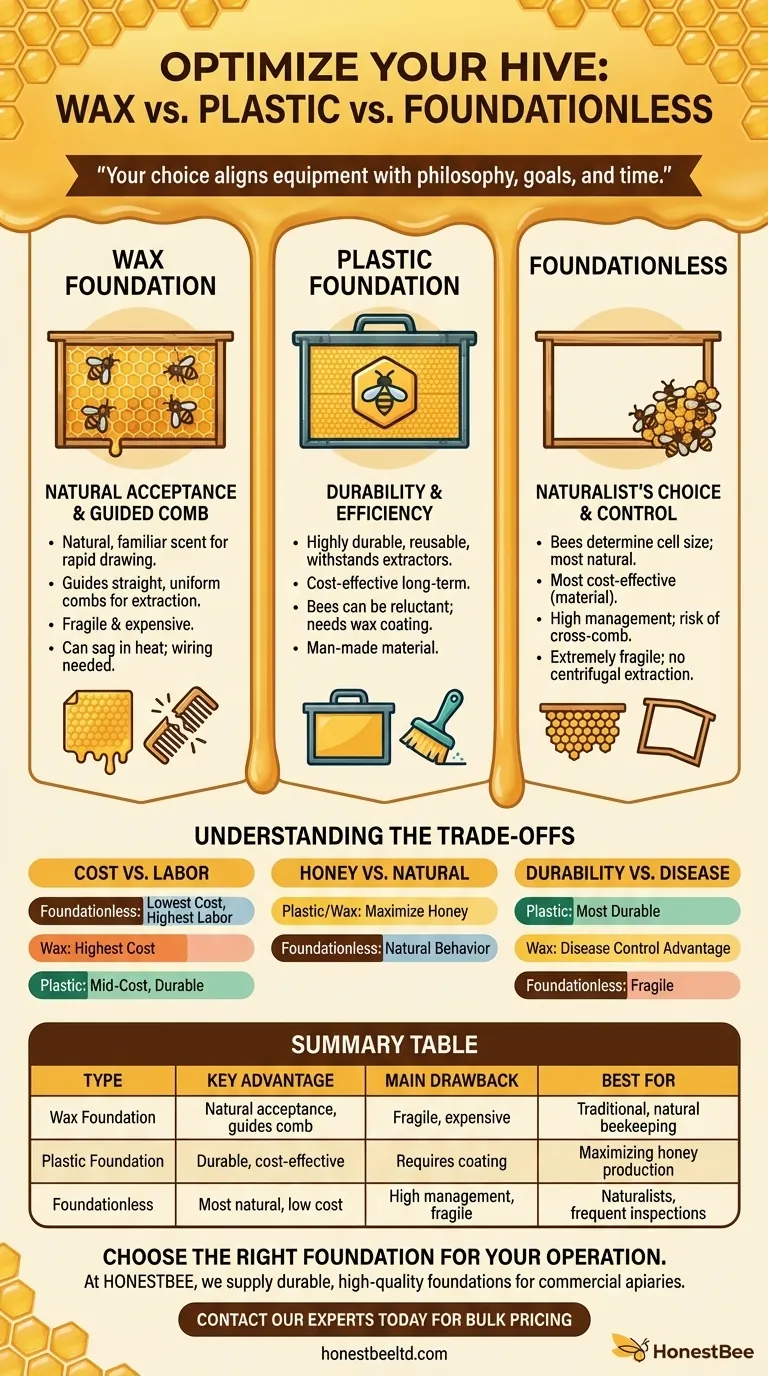
Related Products
- Food Grade Plastic bee Foundation for Bee Frames
- Manual Beeswax Comb Foundation Machine Wax Foundation Mill Embossing Machine
- Colorful Silicone Beeswax Foundation Mold Mould for Beekeeping
- Beeswax Foundation Sheets Beehive Foundation for Wholesale
- Professional Frame Preparation: The HONESTBEE Electric Wire Embedder
People Also Ask
- What factors should beekeepers consider when choosing between beeswax and plastic foundation? A Guide to Durability vs. Natural Philosophy
- How to get bees to draw out plastic foundation? Boost Comb Building with Proven Tactics
- What is a plastic foundation sheet? A Durable, Reusable Hive Management Solution
- How to get bees to use plastic foundation? Master the Wax Coating and Resource Strategy
- Why do commercial beekeepers prefer plastic foundation? Durable, Reusable, and Cost-Effective









